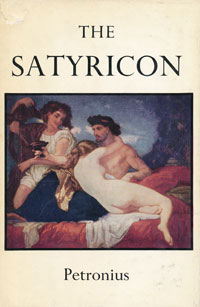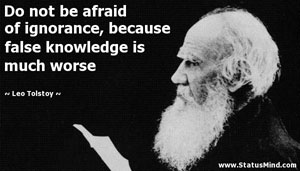WITHOUT proclaiming themselves as ‘novels’, the creative writings of Petronius, Apuleius, and others up to Melidorus in the 4th century AD, delivered a synthesis of approaches to creative writing which involved romantic love, travel, sexuality, mythology, politics, fantasy, imagination, cuisine, wine, serfdom, violence, racial ancestry, family life, and divinity. On the level of general human values, or qualities, such literary interests are no lesser than those of present day creative writers. Today’s specific difference from that of antiquity exists only in the various physical and mental extensions of human ‘progress’, and their obvious repercussions, but not in the perennial physical, sensory, and imaginative activities which govern human existence.
FROM GENERAL TO PARTICULAR
For example, the ‘progress’ of the planet instigated by Industrialism, African slavery in the New World, scientific experiments since the 16th century, literacy, capitalism, and later the  advancements of the nuclear and computer age, became a topic which started to dominate the content of the Western European and Russian novel in the hands of writers like Dickens, Austen, Hardy, Hugo, Zola, Balzac, Tolstoy, Chekov, Turgenev, Dostoyevsky, Gogol, and many others. As studies of such literature gave birth to classes in literary study, and diplomas offering educational ‘proof’, formulas on the definition of the ‘Novel’, ‘Short Story’, ‘Poem’, inevitably emerged. So that the original unhampered, physical, sensory and mental activities which govern human existence, shrunk to the size of popular creative formulas which arose in the era of ‘progress’ mentioned above, influencing all the Arts. The decline of the art of writing therefore unfolded as each new era asserted it specific interests and social values, defined as ‘reality’, contained in abridged formulas governing ‘content’ in numerous art forms.
advancements of the nuclear and computer age, became a topic which started to dominate the content of the Western European and Russian novel in the hands of writers like Dickens, Austen, Hardy, Hugo, Zola, Balzac, Tolstoy, Chekov, Turgenev, Dostoyevsky, Gogol, and many others. As studies of such literature gave birth to classes in literary study, and diplomas offering educational ‘proof’, formulas on the definition of the ‘Novel’, ‘Short Story’, ‘Poem’, inevitably emerged. So that the original unhampered, physical, sensory and mental activities which govern human existence, shrunk to the size of popular creative formulas which arose in the era of ‘progress’ mentioned above, influencing all the Arts. The decline of the art of writing therefore unfolded as each new era asserted it specific interests and social values, defined as ‘reality’, contained in abridged formulas governing ‘content’ in numerous art forms.
PETRONIUS’ ‘THE SATYRICON’
By the time Petronius wrote ‘The Satyricon’ in the 1st century BC, or the 60s, AD, during the era of Nero’s governance of Rome, most of the linguistic possibilities of the future ‘Novel’ were projected in his style; which tells of two young Roman scholars wandering around the urban and rural Roman landscape. What they encounter and experience is not expressed in a singular ‘story’ with a plot, and language servile to an inevitable plot, (which came to define the traditional novel and short story with their artificial control of writing as a formula of ‘entertainment’), but rather in multiple stories succeeding each other, which reveal or expose the social nature of Petronius’ Roman nationality of the time. A number of points make Petronius’ ‘The Satryricon’ a forerunner of the ‘progressive’, or avant-garde style of modern literature.
THE POINTS OF STYLE
First: Is the amazing fact that because such antique creative writing had no literary tradition ahead of it to judge and censor its creative freedom, the creative writer BEGAN with an example of creative freedom in writing, which, over centuries, declined as a literary standard highly effective towards readers, and the increasing quantity of books written became a commodity of commerce, rather than ‘quality’ as a priority of art. Second: In ‘The Satryricon’, the continuous stories written in the 1st person tense, revealing and involving ‘scandalous’ acts between the opposite and same sexes, the materialistic extravagance, vanity, stupidity, and corruption of men and women; the descriptive encounter with poets, painters, paintings, sculptures; the hypocrisy and opportunism of learned men; the long quotations of poetry inserted in the text; the kind and cruel approach to serfdom; the quantity of vivid, colourful descriptions of various cuisine and wines consumed, clothes,  architecture, feminine black magic potions, aphrodisiacs, etc; all of this is given via the narrator’s voice which reveals ITS OWN involvement in this very content, which any reader can see is neither condemned nor condoned uncritically. Third: This sort of self-exposure, is exactly the style of modernist writing from its beginning, where the narrator in not only critical of others, but HIMSELF as well! The reader then, by being substituted for the writer’s “I”, or “we”, when reading, experiences the same self-exposure and self-criticism that is within the text. Fourth: Petronius’ ‘The Satryricon’ as it has survived for us, is really only the fragments of a much larger book of episodes, which, like numerous antique texts, fell into the hands of medieval monks in the 15th and 16th centuries, who, as religious zealots and dogmatic judges of all pleasurable writings they deemed ‘heretical’, mutilated these books, tearing out their large illustrated pages that had come down through the centuries as Roman parchments, so that it was the bawdy Renaissance writer, Boccassio (who wrote ‘The Decameron’), who discovered their abused pages scattered like rubbish on a monastery’s library floor, or used to patch broken windows, wrap trifles, etc, and pleaded to rescue what was left from further destruction. The very fragmentation of ‘The Satryricon’ which has survived, paradoxically, did not harm the book’s reputation, but as if magically suggested a pertinent future structure for modern creative writing, based on the sentence, the paragraph, the chapter, as literary value each by themselves.
architecture, feminine black magic potions, aphrodisiacs, etc; all of this is given via the narrator’s voice which reveals ITS OWN involvement in this very content, which any reader can see is neither condemned nor condoned uncritically. Third: This sort of self-exposure, is exactly the style of modernist writing from its beginning, where the narrator in not only critical of others, but HIMSELF as well! The reader then, by being substituted for the writer’s “I”, or “we”, when reading, experiences the same self-exposure and self-criticism that is within the text. Fourth: Petronius’ ‘The Satryricon’ as it has survived for us, is really only the fragments of a much larger book of episodes, which, like numerous antique texts, fell into the hands of medieval monks in the 15th and 16th centuries, who, as religious zealots and dogmatic judges of all pleasurable writings they deemed ‘heretical’, mutilated these books, tearing out their large illustrated pages that had come down through the centuries as Roman parchments, so that it was the bawdy Renaissance writer, Boccassio (who wrote ‘The Decameron’), who discovered their abused pages scattered like rubbish on a monastery’s library floor, or used to patch broken windows, wrap trifles, etc, and pleaded to rescue what was left from further destruction. The very fragmentation of ‘The Satryricon’ which has survived, paradoxically, did not harm the book’s reputation, but as if magically suggested a pertinent future structure for modern creative writing, based on the sentence, the paragraph, the chapter, as literary value each by themselves.
by Terence Roberts




.png)









